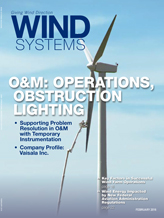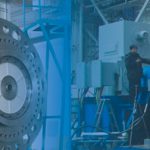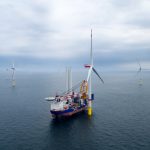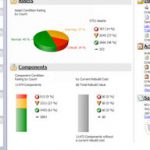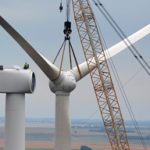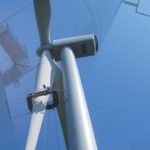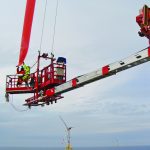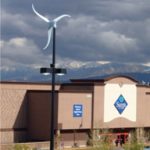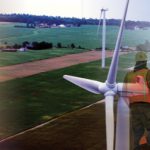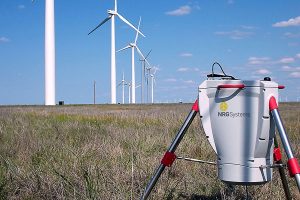While Vaisala may still be a newer name in the wind energy industry, it is a household name for meteorological agencies around the world. The company was founded in 1936 — when meteorology was in its infancy — by Dr. Vilho Väisälä, a Finnish professor who first commercialized the weather balloon in the 1930s. Almost a century later, Vaisala now delivers a range of state-of-the-art measurement devices and services that provide the foundation for most public weather information.
Vaisala began its work in the energy sector in 1983 by helping utilities mitigate the impact of weather on transmission systems, particularly lightning and icing. In 2013, Vaisala expanded into the renewable energy market through the acquisition of Second Wind, the manufacturer of the Triton sonic wind profiler and other wind measurement systems, as well as 3TIER, a global renewable energy assessment and forecasting consulting firm. Both companies have been active in the industry for decades and bring Vaisala a strong team of field-tested experts who have helped it more effectively serve renewable energy customers. Vaisala currently employs 1,600 professionals and has 30 offices in 16 countries that support customers in more than 150 countries. Its primary manufacturing facilities are in Helsinki, Finland, and Boulder, Colorado.
“Our engineering focus is designing highly reliable devices that can handle 24/7 operation in any environment to support industries where weather has a major influence on operations, safety, and profitability,” said Pascal Storck, former president and COO of 3TIER and current global manager of energy services at Vaisala. “Weather, of course, has a strong and growing impact on the renewable energy industry. Our clients turn to us to help them measure, understand, and ultimately predict weather and climate impacts on their business. Our weather expertise allows our wind customers to site and operate projects efficiently and profitably by adapting to environmental challenges. We help our customers to fully understand and leverage the wind resource, or fuel, of a project.”
According to Storck, Vaisala works with its customers throughout the entire life cycle of a wind project — from greenfield prospecting to due diligence and operations — by providing measurement equipment and consulting services. In the early stages of a project, the company’s technologies can help accelerate development and reduce performance risk in each step of the resource assessment process.
Take Vaisala’s Triton wind profiler, for example. According to Storck, this mobile, ground-based system can be rapidly deployed to capture wind information at heights up to 200 meters using state-of-the-art SoDAR technology. Triton’s reputation for accuracy and dependability in remote, off-grid locations has made it one of the most trusted remote sensing systems in the wind industry. Figure 1
“The Triton is a good example of something that sets us apart,” Storck said. “Since it can be used as a mobile meteorological tower, operators can use it to monitor the free-stream wind flow at many locations across their wind farm quickly and easily to better understand atmospheric stability and wind shear.”
Another example would be Vaisala’s Nomad 3 data logger that was released last year, which, according to Storck, has proven to be reliable in the field while remaining incredibly lightweight and user-friendly for easy installation and low maintenance. Figure 2
“For projects that are already online, wind operators use our weather equipment and information to make decisions that drive performance, improve safety, and protect assets,” Storck said. “This includes industry-leading wind power forecasting, lightning data, and a range of weather sensors for condition monitoring.”
Vaisala has a comprehensive view of mission-critical monitoring requirements in the power industry. It can manufacture the equipment and offer installation expertise to provide accurate, reliable on-site data and complement these field measurements with weather and energy forecasting and lightning monitoring services, which in turn enables its clients to justify investments in upgrades and new equipment and perform predictive maintenance scheduling as well as financial and operational risk management.
“A key area where we support customers is identifying and categorizing performance losses to spot problem turbines at wind projects,” Storck said. “On the modeling side, I would say we have been a true thought leader. We were among the first — if not the first — to provide clients with performance reconciliation and seasonal forecasts across their entire portfolio for making operational improvements and doing financial planning. A major advantage of our modeling technology is that we have the most experience in combining modeled resource data with site observations to accurately translate weather information into power output. We can do this across the whole project, turbine-by-turbine, or across a client’s entire portfolio of assets.”
Vaisala is able to minimize the overall cost for its customers with the wide range of products and services it offers.
“On the development side, a few examples would be helping clients determine early on whether to abandon a marginal project site before major investments have been made,” Storck said. “We also design meteorological campaigns and conduct resource assessments so that our clients get the most out of the information collected. This determines a project’s performance uncertainty, whether or not it secures project capital, and how favorable the financing terms are that it receives from the investor. Also, as you can imagine, lightning can cause a large amount of damage to turbines. Our high precision lightning network helps quickly identify and assess damage, cutting down on man-hours for inspection time and allowing customers to spot and repair problem blades early on. If they are able to catch damage early at a single blade, this saves hundreds of thousands of dollars since replacement costs are tenfold higher than repair costs.” Figure 3
Because Vaisala not only manufactures equipment, but also provides installation and maintenance services, it has a solid understanding of the challenges that engineers and wind technicians face on the job.
“We take these scenarios back to our design teams so that the investments we make each year in product improvements are always the most practical and game-changing upgrades,” Storck said. “That’s why we are regularly adding product features that reduce field time and maintenance, increase usability, or improve reliability in extreme conditions.”
On the operations side, Vaisala’s forecasts help schedulers participate in energy markets and avoid huge imbalance penalties by more accurately predicting the wind power that projects will deliver to the grid.
Recently, Vaisala announced that it plans to conduct a wind study in the southeastern region of the United States—an area of the world that has remained almost entirely undeveloped in wind energy generation due to its reputation for low wind resources compared to the rest of the country.
“Today’s taller turbines could make utility-scale wind projects a solid investment prospect for the industry,” Storck said. “Project siting and financial modeling, however, require reliable wind data at the height modern turbines operate, which isn’t broadly available across the southeastern U.S.”
To solve this problem and help lay the groundwork for wind development in the region, Vaisala is partnering with several Southeastern Wind Coalition members, including Southern Company and Santee Cooper, to evaluate utility-scale wind potential in their core operating areas. The final result will be a wind resource database of the Southeast, which will be available to the coalition’s members, as well as a publicly available wind resource map at high altitudes.
“In order to complete our study, we are combining our remote sensing technology and mesoscale modeling capabilities to produce a wind resource database of the Southeast and a publicly available wind resource map at high altitudes,” Storck said. “To complete this work, we are first installing Triton wind profilers in select locations to collect quality-controlled data at high heights. The technology is well-suited for this project since it can be installed quickly without the permits required of tall towers and collects data across the entire swept area of a turbine. We will then use these measurements to conduct a high-resolution spatial analysis of the region using our advanced weather models.”
This is just one example of how the wind industry and companies like Vaisala are moving in the right direction. Following the recent five-year extension of the production tax credit (PTC) that has given the U.S. wind industry a major and much-needed economic boost to develop wind farms across the country, and given how long it takes to build a wind project from start to finish, Storck said this newfound stability and multi-year certainty is a critical milestone for Vaisala and the wind energy market.
“Much of our work is with developers, and while we are fortunate that we have a global footprint and can support customers around the world, the U.S. is one of our largest markets, so this stability is crucial to our business,” Storck said.
For more information,
go to www.vaisala.com/energy.



















